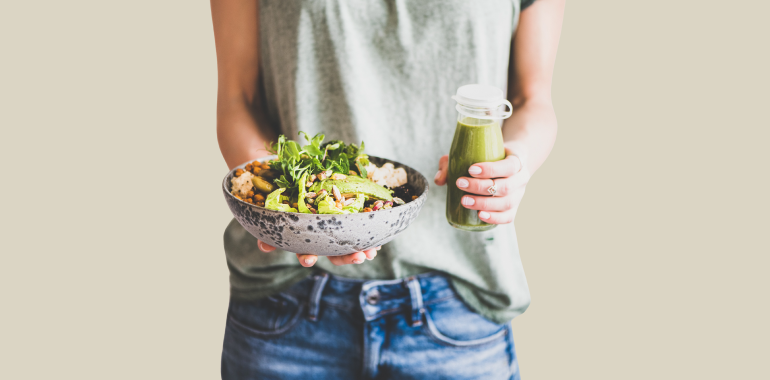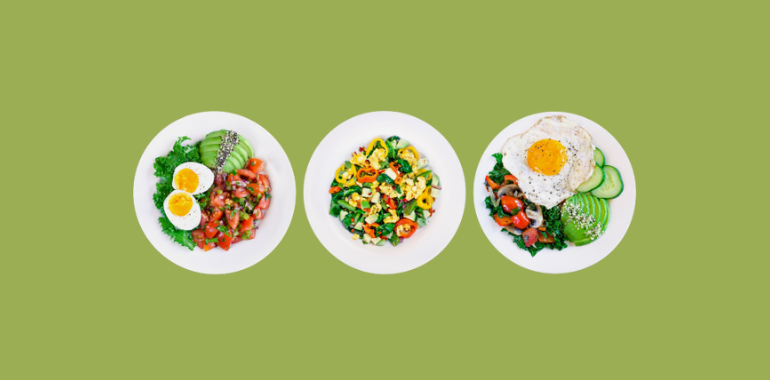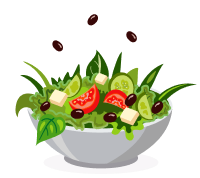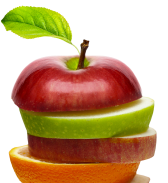Table Of Contents
What is the New Pegan Diet?
The pegan diet mixes vegan and paleolithic dietary styles. The diet was devised and named after Dr. Mark Hyman, a functional medicine practitioner, and author.
The paleolithic or paleo diet seeks to replicate the foods our forefathers may have consumed before the Agricultural Revolution 12,000 years ago. It emphasizes the consumption of meats, seafood, and fresh fruits and vegetables. Paleo diet supporters argue that human bodies are genetically predisposed to consume certain types of meals and that eating processed foods is unhealthy.
Vegans avoid eating animal products such as meat, fish, eggs, and dairy. Furthermore, vegans avoid consuming animal products such as honey, as well as dietary additives and colorings derived from animals or insects. The vegan diet foregoes the use of animals for entertainment, clothing, or sustenance.

Dr. Hyman’s pegan diet combines components of both diets and suggests eating primarily plants with animal items as a side dish rather than the main entrée. Furthermore, the diet eliminates dairy and gluten and advises eating beans sparingly.
Since its debut in 2014, the pegan diet has progressively gained traction among individuals looking for “clean,” healthy dietary recommendations.
However, the pegan diet has been chastised for excluding or nearly excluding dairy, grains, and beans, which many nutritionists think contribute to essential nutrients that should be included in a balanced diet.
21 Day Pegan Diet: Practical Strategies for Regaining Your Health
Because it excludes grains, legumes, and dairy products, a pegan diet needs to be more balanced in comparison to federal recommendations for a healthy diet. It does, however, advocate for nutrient-dense foods such as entire fruits, vegetables, legumes, and whole grains. It also prioritizes lean protein, low-fat dairy, and healthy fats.
The USDA‘s calorie, macronutrient, and micronutrient requirements do not conflict with a pegan diet because they do not limit the amount of food you can consume in a given day.
You should be able to meet these requirements by planning ahead of time and following the diet’s meal guidelines. In addition, knowing how many calories you need to consume each day will help you stay on track with your weight loss goals.
- Whole foods include fruits, vegetables, meats, and nuts, which is the same as a vegan diet consisting solely of plant-based meals.
- The pegan diet is a nutrient-dense diet comprised of approximately 75% plant-based and 25% animal-based foods.
- The remaining 25% of your nutrition comes from animal-based meals. It promotes the intake of whole, fresh foods produced in a sustainable manner with low environmental impact.
- The diet also limits the consumption of processed foods, milk and dairy products, and gluten.
Keep the following points in mind when developing a 21-day pegan diet plan.
Take as Many Vegetables as Possible
More than half of your plate’s contents should be vegetables—the more vibrant the hue, the greater the health advantages. The World Health Organization recommends a bare minimum of 5 servings of fruits and vegetables per day.
The 21-day pegan diet weight loss plan recommends eating 15 servings of vegetables and fruit daily, or 7 to 8 cups.
Reduce your consumption of starchy meals like potatoes and squash in favor of more vivid, lush green veggies.
Have Healthy Fats Your Number One Priority
Fatty acids are necessary components of the diet, but as with most other nutrients, consuming them in their entirety gives the maximum nutritional value.
Whole, unprocessed meals have good fats. Use extra virgin olive oil with raw meals. Use avocado oil or organic virgin coconut oil when cooking.
Fish, eggs, grass-fed or sustainably farmed meat, grass-fed butter, or ghee are all excellent animal and saturated fat sources.
Increase Your Intake of Nuts and Seeds
The treatment of diabetes, heart disease, and obesity can all be effectively managed using nuts and seeds.
They are great sources of fiber, healthy fats, protein, minerals, and other nutrients.
Avoid eating too many fruits
While vegan advocates advise eating all fruits in equal proportions, some paleo proponents believe that low-sugar fruits like berries can be consumed in high numbers.
All fruit is delicate to eat if you are healthy and in good shape. However, you should restrict your fruit intake if you are overweight. Instead, save the other fruits for special occasions and stick to low-glycemic fruits.
Utilize meat in side dishes
Avoid serving meat as the main course, and limit your meat portions. Instead, meat should be a side dish, with vegetables being the main attraction. The serving sizes of each meal should be at most 4 to 6 ounces at most.
In addition, insects are a fantastic new source of extra protein that you can utilize in a variety of recipes, including smoothies, bars, and other desserts, for the more adventurous.
The utilization of ground-up crickets to create a high-protein powder has grown in favor in recent years as a viable protein source.
Make Beans a Part of Your Pegan Diet Plan
Depending on the type, beans can be a great source of nutrients, protein, and fiber. However, they may cause digestive problems for those who consume them, and the lectins and phytates they contain may hinder the absorption of minerals.
On a vegetarian diet, beans are not required to be avoided entirely, but Dr. Hyman suggests using caution because of their high starch content, which can cause blood sugar levels to surge.
Eat Mainly Whole Grains
According to the paleo philosophy, the pegan diet restricts the ingestion of almost all grains. It contains a variety of grains, including wheat, oats, barley, bulgur, and others. According to Dr. Hyman, wheat causes inflammation and elevates blood sugar.
However, some data point to the opposite being true. On the pegan diet, it is occasionally acceptable to consume low-glycemic grains like quinoa or black rice in moderation.
Keep Sugar to a Minimum
You should leave everything in your pegan diet that raises insulin levels and spikes blood sugar, including granulated sugar, corn syrup, processed starches, and carbohydrates.
Consider all forms of sugar consumption to be occasional indulgences.
Reduce the Amount of Dairy You Consume
Hyman contends that the process used to produce dairy products harms both the environment and the animals used to create them. In addition, dairy has been linked to a number of diseases and conditions, including cancer, osteoporosis, autoimmune disorders, allergies, digestive problems, and others.
Avoid dairy products altogether, except for the occasional grass-fed dairy items listed below.
Avoid all foods That Include Preservatives and Additives
Avoid hormones, antibiotics, pesticides, herbicides, and preferably foods that have been genetically engineered. In addition, avoid foods that contain chemical additives, preservatives, colors, artificial sweeteners, or other undesirable components such as trans fats.
While the viability of genetically modified creatures is debatable, Hyman believes they are an unrestricted experiment on humans and recommends you steer clear of them.

What Is the Pegan Diet Good For – Common Health Benefits?
The pegan diet, which emphasizes complete, nutrient-dense foods, has a number of benefits over other eating plans.
According to Dr. Rajagopal, the pegan diet is comparable to other eating regimens with a track record of success. In that it places a strong emphasis on natural foods and good fats, it is similar to the Mediterranean diet but differs since grains and dairy are avoided. That might be its best-selling feature for certain patients.
Eating more fruits and vegetables, which are rich in fiber, vitamins, minerals, and antioxidants, is always good for your health. These vitamins and minerals can aid in the prevention of obesity, type 2 diabetes, heart disease, and inflammation. In addition, because it emphasizes whole-eating foods and avoids consuming many high-sugar and highly processed meals, she claims that a pegan diet may also “maybe” aid in weight loss.
Since there has yet to be much research, especially on the pegan diet, other possible health benefits of this eating strategy, such as lowered blood pressure, have yet to be noted in clinical investigations. So on a clinical level, at least, the verdict is still out.
1. Promotes foods with a low GI
The glycemic index measures the speed at which a specific item elevates blood sugar levels. The pegan diet recipes counsel followers to educate themselves on which meals can assist in bringing blood sugar levels back to normal.
Low GI may be advantageous, especially for those with diabetes, pre-diabetes, or other illnesses involving insulin.
2. Less limiting
If you’ve ever tried to follow a strict paleo or vegan diet, you know it can be complicated. However, since it falls between the other two, the pegan diet is more adaptable and well-balanced than either of the other two.
3. Places a focus on long-term sustainability
Paleolithic eating habits are criticized for harming the ecology. For example, if everyone consumed meat at every meal, it might result in land degradation, air pollution, and water use.
By encouraging people to consume less and to eat meat that has been raised ethically, pegantism helps to mitigate this effect.
What to Eat on a Pegan Diet – Super Foods List
The diet and plates at mealtimes should consist of 75% fruits and vegetables. Dr. Hyman advises including two to three vegetable servings per meal.
For those following a low GI diet, nonstarchy vegetables are preferable:
- asparagus
- arugula
- infant corn
- greens
- collard
- beetroot
- broccoli
- cabbage
- carrot
- celery
- cucumber
- eggplant
- green beans
- kale
- mushrooms
- onions
- peppers
- romaine
- lettuce
- tomato
- turnip
- spinach greens
- zucchini
Dr. Hyman advises seeds:
- flax seeds
- chia seeds
- hemp seeds
- any type of nut, which is a legume.
The pegan diet recommends the following fats:
- omega-3 fatty acids from oily fish, flax, hemp, or walnuts
- nuts
- coconut
- avocado
- saturated fats from grass-fed or sustainably raised animals.
You can also eat minimal amounts of:
- Black rice.
- Legumes like beans or lentils (up to one cup per day).
- Quinoa.
- Sugar or desserts, though these should be very limited.
Pegan Meal Plan: Should You Try It?
The pegan diet has various advantages, but before starting, see your doctor. Anytime a diet removes entire food groupings, proceed with caution. Additionally, those with medical issues such as iron or B12 deficiency may need to be better candidates for the pegan diet. Finally, work with your healthcare professional to receive the vitamin D and calcium your bones require if you have osteoporosis.
A strict vegan diet will only help you if you want to save money on groceries. Grass-fed and organic meats are significantly more expensive than conventional cuts. And you need to eat beans or other legumes to maintain a fantastic source of affordable, meatless protein.
Protein, iron, and vitamin B12—all of which are included in meat, eggs, and tofu—should all be consumed in sufficient amounts. A minimum of 1,000 mg of calcium per day is also necessary; older or pregnant adults require much more. Find out how to acquire your recommended daily dose of calcium by speaking with your doctor or a trained nutritionist.
Whole grains, beans, and legumes are also included in the CDC’s suggested healthy eating plan for maintaining a healthy weight.
Some people avoid particular foods to manage their medical conditions, such as those with diabetes or celiac disease.
However, it may be overly restrictive if people do not have intolerances or allergies to the food groups that the pegan diet restricts. Additionally, it might increase the difficulty and cost of eating out as well as the time it takes to prepare food.
You don’t have to adopt a fully pegan lifestyle to profit from some of its advantages. For example, Lembo James asserts that increasing your intake of fruits and vegetables can reduce your chances of cancer, heart disease, and stroke. However, avoid cutting back on dairy, legumes, or whole grains without consulting a physician or nutritionist.
7 Pegan Breakfast Ideas for Your Successful Weight Loss
Let’s move on to the exciting phase now! Giving you a few delicious suggestions for a balanced Pegan diet. Even if those sugar-glazed donuts may be a thing of the past, keep reading for other delicious offers to get your day started off correctly!
Dr. Hyman claims that breakfast is one of the most crucial components of a healthy lifestyle, yet we all know how busy mornings can be. You sleep more frequently than not, and before you realize it, breakfast is no longer an option. So you skip breakfast entirely, pick up some coffee shop items, or go through the drive-through.
However, you may quickly and simply savor a nutritious Pegan breakfast to start your day off well with a bit of forethought and preparation.
People who follow the pegan diet plan typically eat eggs, fish, or some leftover chicken from dinner for the morning, along with some healthy fats like avocados, nuts, or nut butter. Add some fiber from berries or other antioxidant-rich fruits next, and finish with a vegetable-based, low-glycemic carbohydrate!
- With blueberries on top, almond flour pancakes are cooked with eggs and monk fruit sweetener.
- Green smoothie (coconut milk, protein from grass-fed beef, half a banana, half an avocado)
- Mushrooms, bell pepper, and avocado in scrambled eggs
- Chia banana pudding with collagen protein
- Spinach, mushrooms, and yellow squash scrambled with 1-2 pastured eggs or egg yolks in coconut oil.
- Body Boosting Tea (1 tbsp. MCT oil, collagen peptides, cinnamon, and vanilla added to chai tea)
- Berry smoothie with coconut milk, spinach, protein powder, and nut butter.
5 Best Pegan Diet Snacks
Sometimes, you need a filling between-meal snack or a tiny plate to serve visitors—people associate chips, popcorn, cookies, and other processed foods with snacks. Snacking shouldn’t be unhealthy in the first place.
Here are some recipes for popular snacks that are also excellent as appetizers during social occasions:
1. Coconut Cashews with Curry
Nutrient for a serving (1/2 cup): 250 calories, 13g fat, 7g saturated fat, 0mg cholesterol, 2g fiber, 4g protein, and 448mg sodium.
2. Dawn Nori Wraps
Nutritional evaluation for one wrap: 164 calories, 9g of fat, 0 mg of cholesterol, 7g of fiber, 4g of protein, 20g of carbohydrates, 40 mg of sodium, and 10g of sugar.
3. Broccoli Roasted with Tomatillo Salsa
Nutrition for a serving (about three tablespoons): Sodium 70mg, 2g of sugar, 6g of total fat, 2g of protein, 3g of fiber, and 85 calories.
4. Dipping Eggs
Nutritional evaluation for two deviled eggs per serving: 84 calories, 0.5 g of carbohydrates, 0 g of fiber, 5.6 g of protein, 6.6 g of fat, 186 mg of cholesterol, 120 mg of sodium, and 22 mg of calcium.
5. Tahini with Roasted Garlic Spread
Nutritional evaluation for each serving (about 2 tablespoons): Sodium 55mg, Protein 6.4g, Fiber 7.7g, Total Fat 17.2g, Calories 250.
Conclusion: The PEGAN Diet is Your Best Option After Veganism!
If you’re looking for a healthy and nutritious diet after experimenting with veganism, the pegan diet weight loss program is the ideal choice. The pegan diet consists of 75% fruits and vegetables, sourcing them from organic and local sources whenever possible.
This means fewer chemicals and pesticides, reducing toxins in your body—a direct benefit for people who enjoyed veganism but wanted something more tailored to their needs.
On top of this more nutritionally balanced meal plan, the pegan diet also emphasizes clean proteins such as plant-based proteins and wild-caught fish with responsibly raised meats on occasion.
This combination provides a balance of essential fatty acids, antioxidants, vitamins, and minerals that fits perfectly into anyone’s lifestyle. With its sustainability factor, excellent nutrition profile, and fewer restrictive rules than veganism has, this is definitely one of the best options when transitioning away from a plant-based diet.










